Al Hirschfeld, celebrity caricaturist
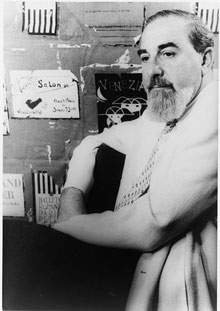 |
| Al Hirschfeld |
The twentieth century was a period of events that brought both industrial and cultural changes upon society. It is not surprising, then, that this historical period saw the emergence of new art forms that immediately became part of the collective imagination. Among the many artists who marked the twentieth century, mention should be made of Albert Hirschfeld, known as “Al,” the well-known caricaturist who loved to draw portraits of movie and Broadway celebrities of his time. Al was born June 21, 1903, in St. Louis, Missouri, but grew up in New York City, where he completed part of his studies. He also studied in Europe, in London and Paris to be exact, and became a celebrated artist, thanks in part to his collaborations with The New York Times, whose pages hosted his work.
Al Hirschfeld’s graphic style was famously simple and curvilinear, but that did not mean he did not follow a certain criterion when he drew: “Anatomy does not interest me. I try to stay away from the eye-ear-nose-throat resemblance. A big nose you make bigger, but this is stupid. I try to do it the way it looks,” is what the artist once said. So many celebrities have been portrayed in his works: actors from Hollywood’s Golden Age such as Charlie Chaplin, Laurel and Hardy and the Marx Brothers, the legendary Frank Sinatra and Fred Astaire, the likes of Gregory Peck, Humphrey Bogart, Bette Davis, Kirk Douglas and Paul Newman, esteemed directors such as Alfred Hitchcock and Blake Edwards, and music icons such as Elvis Presley, Bruce Springsteen, Duke Ellington and Madonna. Even classical musicians such as Mozart and Giuseppe Verdi became subjects of his caricatures, sometimes ending up on book covers dedicated to them.
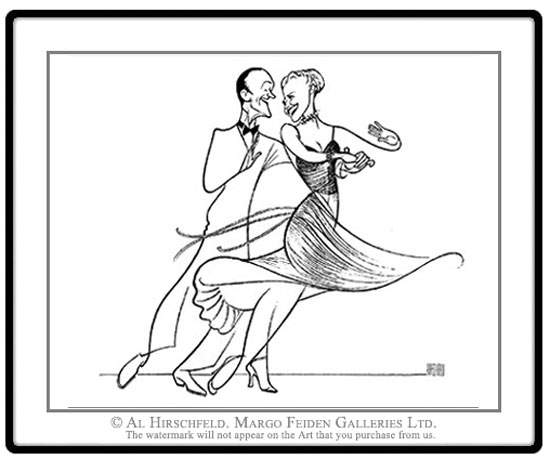 |
| Al Hirschfeld, Fred Astaire and Ginger Rogers (1989) |
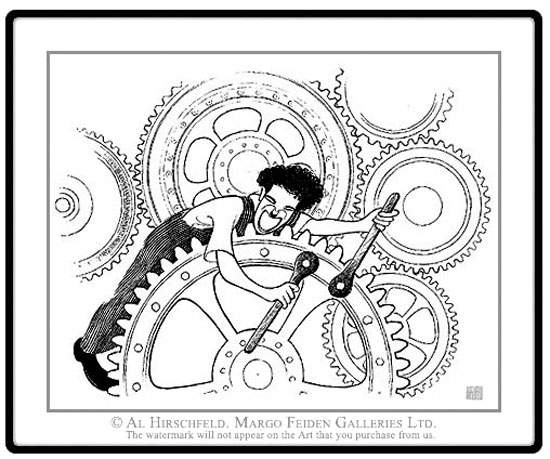 |
| Al Hirschfeld, Charlie Chaplin in “Modern Times” (1992) |
Perhaps it is the apparent simplicity of his style that has made his drawings so famous: with just a few strokes of ink, Hirschfeld manages to capture the soul of the characters he depicts. Hirschfeld’s were not elaborate caricatures or rich in detail simply because the artist aimed to capture the essentials: a procedure in line with the artistic pursuits of the time, and it should not be forgotten how, according to many scholars, Hirschfeld was influenced by the drawing of Miguel Covarrubias, who in turn was influenced by Cubism. To understand how his characters came into being, it may be useful to refer to one of the caricatures depicting Stan Laurel and Oliver Hardy, our very famous and hilarious Laurel and Hardy: Hirschfeld used to say that the two actors, standing next to each other, reminded him of the number ten (and it is easy to imagine why: skinny Laurel, well-built Hardy). And it is with that in mind that Hirschfeld portrays them: Laurel’s face narrows and simultaneously lengthens as if it were to fit into the vertical line of the 1 that makes up the 10 while, on the contrary, Hardy’s body takes on the shape of a circle, with his arm extended to make the shape the caricaturist was thinking of even more obvious.
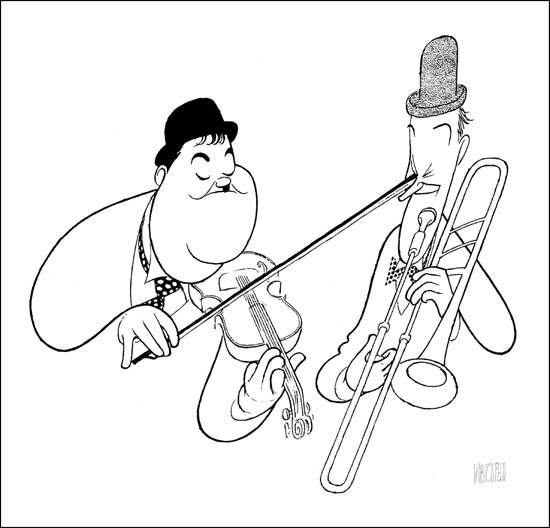 |
| Al Hirschfeld, Laurel & Hardy - Here’s looking at you (1990) |
The importance and fortune of Al Hirschfeld’s caricatures was such that in film and music circles in America the term “Hirschfelded” was coined, which we could render as “hirschfelded”: that is, when an actor, a musician, a dancer came to get Hirschfeld’s attention (and were thus “hirschfelded” in one of his famous caricatures) it meant that they had achieved success.
Hirschfeld once said, “I try to capture the character of the play or the individual, rather than make a caricature just for the sake of it.” In fact, the artist did not just draw caricatures for portraiture purposes, he very often recreated actual scenes from films and plays such as “My Fair Lady,” “West Side Story,” “Hairspray” and even “Othello,” as well as caricatures of actors in the guise of their most famous characters such as Sidney Poitier in “The Lilies of the Field” or actors Howard Keel and Jane Powell while wearing stage costumes from “Seven Brides for Seven Brothers.”
Al Hirschfeld died on Jan. 20, 2003, six months before he was eligible to reach the 100-year age mark, but he still made time to portray such early 21st century VIPs as actors Ben Stiller and Halle Berry and computer mogul Bill Gates. With his departure, Al left us with a century of art that revolutionized the way caricatures were made and, as mentioned, fueled the celebrity status symbol.
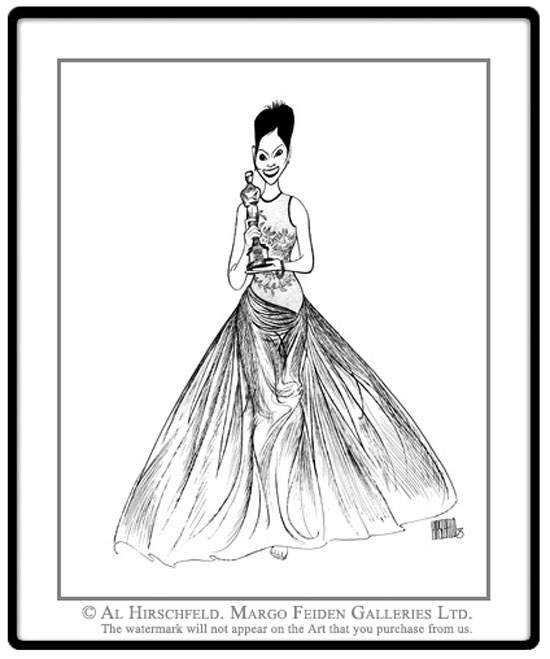 |
| Al Hirschfeld, Halle Berry (2002) |
Warning: the translation into English of the original Italian article was created using automatic tools. We undertake to review all articles, but we do not guarantee the total absence of inaccuracies in the translation due to the program. You can find the original by clicking on the ITA button. If you find any mistake,please contact us.




























